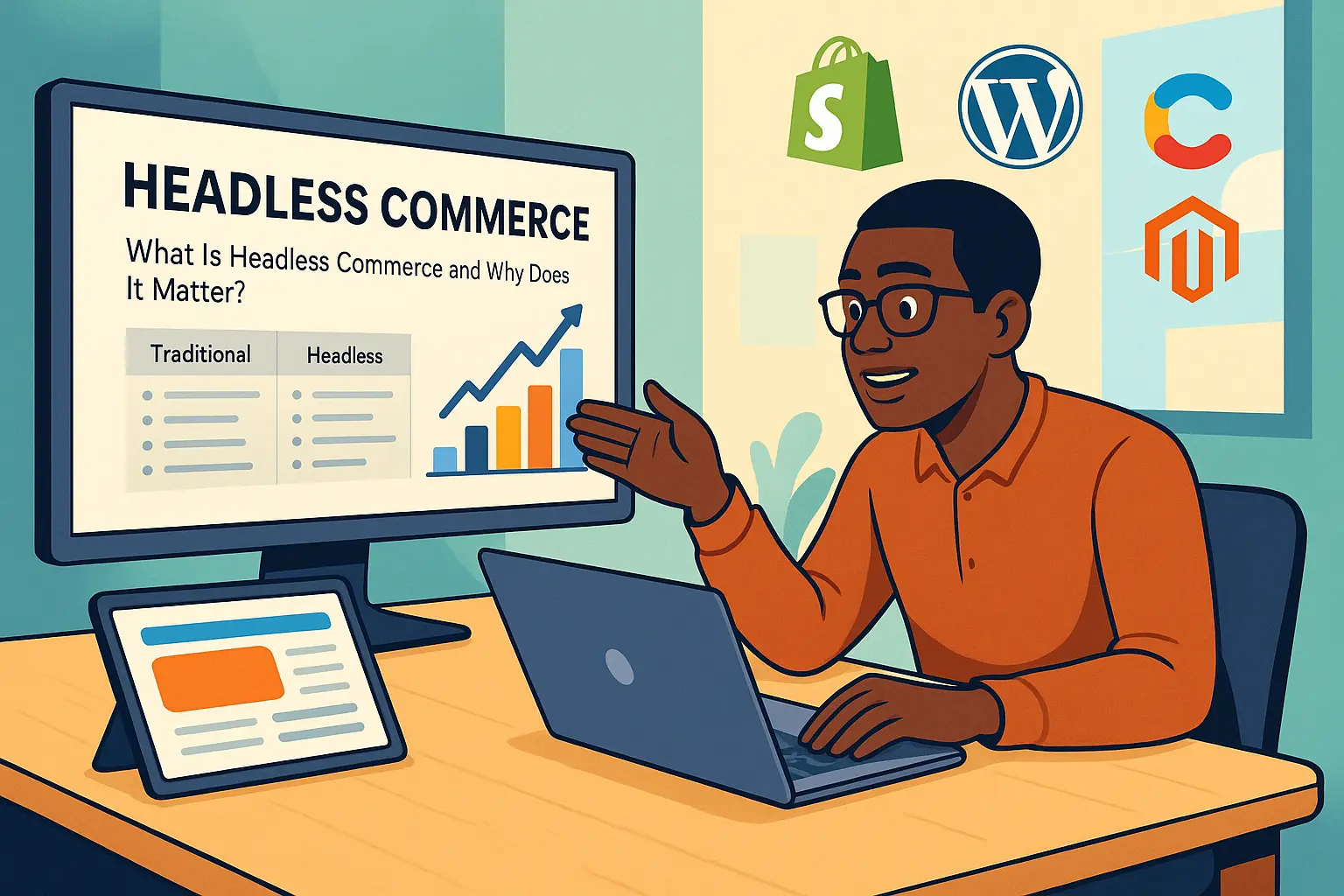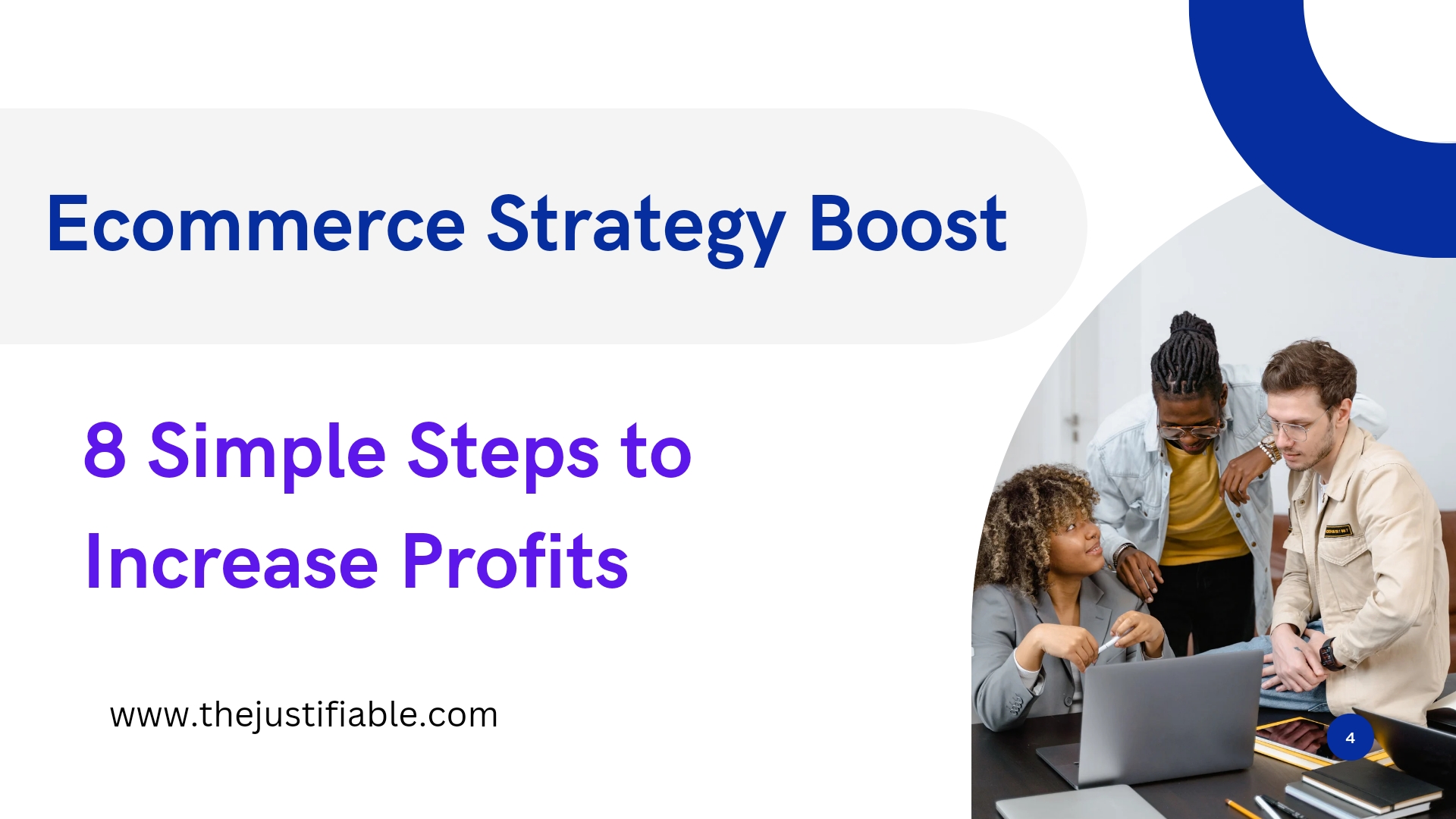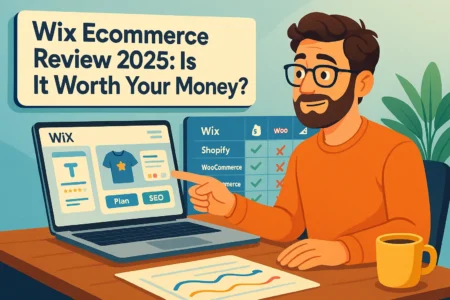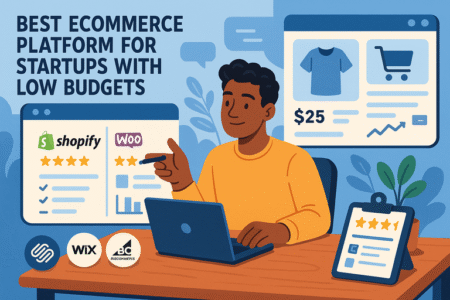Table of Contents
Headless commerce has been buzzing in the ecommerce world for years, but many people still don’t quite understand what it means or why it’s so powerful.
Let me break it down for you in plain language: Headless commerce is about separating the “front end” (what customers see) from the “back end” (where all the product, checkout, and order management lives).
This gives brands the freedom to design unique experiences without being boxed in by rigid platforms. And it matters a lot because shopping today happens everywhere — websites, mobile apps, voice assistants, even smart fridges.
The Basics of Headless Commerce Explained
Headless commerce sounds technical, but at its core, it’s simple.
It gives you flexibility by decoupling design and content from the backend systems that power transactions.
How Traditional Ecommerce Differs From Headless
In a traditional ecommerce platform, everything is bundled: The storefront, checkout, and backend functions are tied together. That’s fine for a standard online store, but it’s limiting if you want to create unique digital experiences.
Headless flips the script. The backend still handles product information, pricing, and orders, but the front end can be built however you want. You could use a CMS like WordPress, a custom mobile app, or even an AR shopping experience. APIs (application programming interfaces) connect the two sides.
From what I’ve seen, brands that go headless often do it because they don’t want their creativity limited by template-driven platforms.
Why This Flexibility Is a Game Changer
The freedom to design front ends without breaking backend functionality allows businesses to move faster, test ideas, and adapt to new channels.
For example, if a retailer wants to launch a TikTok mini-store or an in-store kiosk, headless makes it possible without re-engineering the whole system.
Why Headless Commerce Is Gaining Momentum
Headless commerce is exploding in popularity because consumer behavior has changed.
Shoppers no longer stick to one channel, and they expect seamless, fast, and consistent experiences everywhere.
Meeting Customers Wherever They Shop
Today’s customers might browse your site on a laptop, then add to cart on a mobile app, and later complete the purchase through voice command on Alexa.
Traditional systems weren’t built for that fluidity. Headless, on the other hand, thrives in an omnichannel world.
A real-world example: Nike uses headless commerce to unify their digital storefronts across apps, web, and even in-store experiences. It lets them stay consistent with branding while customizing experiences for each platform.
Faster Adaptation to New Technologies
Headless makes it easier to plug into emerging tech without waiting on slow platform updates. If a new social platform with shopping features takes off tomorrow, a headless setup means you can integrate it through APIs instead of rebuilding from scratch.
This speed of innovation is exactly why startups and big brands alike are adopting headless models.
Benefits of Headless Commerce for Businesses
The benefits of headless commerce aren’t just about flexibility. They directly impact growth, efficiency, and customer experience.
Custom Experiences That Drive Engagement
With headless, you’re not tied to cookie-cutter storefronts. You can design experiences tailored to your audience — whether that means immersive product visualizations, personalized landing pages, or content-driven shopping.
This freedom can seriously increase conversion rates because the shopping journey feels unique and relevant.
Scalability Without Breaking Things
I believe scalability is one of the biggest advantages. Traditional platforms often buckle under high traffic or expansion. Headless allows you to scale front ends independently.
If your web traffic spikes, you can optimize the web experience without touching backend systems like inventory or payment processing.
Faster Experimentation
Marketers and developers love headless because it makes A/B testing and quick rollouts easier.
Imagine testing two checkout flows on your mobile app while keeping your website checkout stable.
With headless, that’s not only possible but straightforward.
Challenges and Considerations of Headless Commerce
Headless commerce isn’t a magic bullet. It comes with challenges you should think through before diving in.
Higher Initial Setup Costs
Compared to a standard ecommerce platform, headless can be more expensive to implement upfront.
You need developers who can build and connect the front end and backend with APIs. For small businesses, this can feel overwhelming.
More Responsibility on Your Team
When you go headless, you own the architecture. That means you need in-house or outsourced developers to maintain and scale it.
Unlike plug-and-play platforms, updates and optimizations aren’t automatically handled for you.
Finding the Right Tech Stack
Headless gives you freedom, but too much choice can be paralyzing. Do you pair Shopify’s backend with a React.js storefront? Or do you use BigCommerce APIs with a CMS like Contentful?
Choosing wisely matters, because mismatched systems can create friction instead of speed.
Who Should Consider Headless Commerce?
Not every business needs headless commerce. But if you’re growth-minded or pushing the envelope with customer experiences, it might be worth considering.
Ideal Scenarios for Going Headless
- Brands with multiple sales channels (web, mobile, IoT, in-store).
- Businesses needing high customization (luxury, fashion, or tech-heavy brands).
- Companies planning for international expansion with complex localization.
From my experience, headless really shines when your marketing and product teams want freedom to innovate, while your backend operations need to stay stable.
When a Traditional Platform May Be Enough
If you’re a small shop just getting started, a traditional all-in-one ecommerce platform can still be the smarter move.
Simplicity can sometimes beat flexibility, especially when resources are tight. Headless is a marathon play, not a sprint.
Getting Started With Headless Commerce
If you’re curious about taking the leap, there are practical steps to ease into headless commerce without overwhelming your team.
Start With a Hybrid Approach
One way is to keep your existing ecommerce backend (like Shopify or Magento) and build a custom front end for a specific channel.
For example, you could launch a headless mobile app first, while leaving your website as-is.
Choose APIs and Frameworks That Fit Your Goals
From the dashboard of Shopify Plus, you can connect to Storefront API, which lets you build custom front ends using React or Vue. BigCommerce offers similar APIs.
If you want content-rich experiences, pairing them with a headless CMS like Contentful can be a strong move.
Don’t Skip Testing and Analytics
Every new front end you create should have testing baked in. A/B test layouts, track KPIs like cart abandonment, and analyze customer behavior across touchpoints.
Headless is only as valuable as the insights you use to refine it.
Expert Tip: Don’t Chase Headless Just for the Buzz
Headless commerce matters because it gives businesses adaptability in a world where shopping is no longer tied to one channel. But I’d advise not to go headless just because it sounds trendy.
Ask yourself: Will it help your business move faster, connect better with customers, and scale with fewer headaches? If the answer is yes, then headless might be the future of your commerce strategy.






